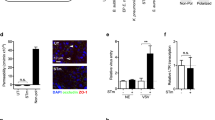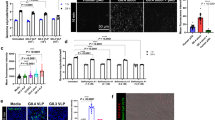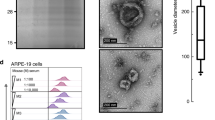Abstract
The upper gastrointestinal tract is a principal route of HIV-1 entry in vertical transmission and after oral–genital contact. The phenotype of the newly acquired virus is predominantly R5 (CCR5-tropic) and not X4 (CXCR4-tropic), although both R5 and X4 viruses are frequently inoculated onto the mucosa. Here we show that primary intestinal (jejunal) epithelial cells express galactosylceramide, an alternative primary receptor for HIV-1, and CCR5 but not CXCR4. Moreover, we show that intestinal epithelial cells transfer R5, but not X4, viruses to CCR5+ indicator cells, which can efficiently replicate and amplify virus expression. Transfer was remarkably efficient and was not inhibited by the fusion blocker T-20, but was substantially reduced by colchicine and low (4 °C) temperature, suggesting endocytotic uptake and microtubule-dependent transcytosis of HIV-1. Our finding that CCR5+ intestinal epithelial cells select and transfer exclusively R5 viruses indicates a mechanism for the selective transmission of R5 HIV-1 in primary infection acquired through the upper gastrointestinal tract.
This is a preview of subscription content, access via your institution
Access options
Subscribe to this journal
Receive 12 print issues and online access
$209.00 per year
only $17.42 per issue
Buy this article
- Purchase on Springer Link
- Instant access to full article PDF
Prices may be subject to local taxes which are calculated during checkout






Similar content being viewed by others
References
Smith, P.D. & Wahl, S.M. in Mucosal Immunology (eds. Ogra, P.H. et al.) 977–989 (Academic Press, San Diego, California, 1999).
Maayan, S. et al. Sexual behavior of homosexual and bisexual men attending an HIV testing clinic in Jerusalem 1986/7–1990. Isr. J. Psych. Rel. Sci. 30, 150–154 (1993).
Schwarcz, S.K. et al. Temporal trends in human immunodeficiency virus seroprevalence and sexual behavior at the San Francisco municipal sexually transmitted disease clinic, 1989–1992. Am. J. Epidemiol. 142, 314–322 (1995).
Schacker, T., Collier, A.C., Hughes, J., Shea, T. & Corey, L. Clinical and epidemiologic features of primary HIV infection. Ann. Intern. Med. 125, 257–264 (1996).
Bomsel, M. Transcysosis of infectious human immunodeficiency virus across a tight human epithelial cell line barrier. Nature Med. 3, 42–47 (1997).
Bomsel, M. et al. Intracellular neutralization of HIV transcytosis across tight epithelial barriers by anti-HIV envelope protein dIgA or IgM. Immunity 9, 277–287 (1998).
Alfsen, A., Iniguez, P., Bouguyon, E. & Bomsel, M. Secretory IgA specific for a conserved epitope on gp41 envelope glycoprotein inhibits epithelial transcytosis of HIV-1. J. Immunol. 166, 6257–6265 (2001).
McNearey, T., Hornickova, Z., Markham, R., Birdwell, A. & Arens, M. Relationship of human immunodeficiency virus type 1 sequence heterogenicity to stage of disease. Proc. Natl. Acad. Sci. USA 89, 10247–10251 (1992).
Wolinsky, S.M. et al. Selective transmission of human immunodeficiency virus type-1 variants from mothers to infants. Science 255, 1134–1136 (1992).
Zhu, T. et al. Genotypic and phenotypic characterization of HIV-1 in patients with primary infection. Science 261, 1179–1181 (1993).
van't Wout, A.B. et al. Macrophage-tropic variants initiate human immunodeficiency virus type 1 infection after sexual, parenteral, and vertical transmission. J. Clin. Invest. 94, 2060–2070 (1994).
Pratt, R.D., Shapiro, J.F., McKinney, N., Kwok, S. & Spector, A. Virologic characterization of primary human immunodeficiency viarus type 1 infection in a health care worker following needlestick injury. J. Infect. Dis. 172, 851–854 (1995).
Li, L., Meng, G., Graham, M.F., Shaw, G.M. & Smith, P.D. Intestinal macrophages display reduced permissiveness to human immunodeficiency virus type 1 and decreased surface CCR5. Gastroenterology 116, 1043–1053 (1999).
Meng, G. Sellers, M.T., Rogers, T.S., Shaw, G.M. & Smith, P.D. Lamina propria lymphocytes, not macrophages, express CCR5 and CXCR4 and are the likely target cell for human immunodeficiency virus type 1 in the intestinal mucosa. J. Infect. Dis. 182, 785–791 (2000).
Smith, P.D., Fox, C.H., Masur, H., Winter, H.S. & Alling, D.W. Quantitative analysis of mononuclear cells expressing human immunodeficiency virus type 1 RNA in esophageal mucosa. J. Exp. Med. 180, 1541–1546 (1994).
Smith, P.D. et al. Isolation and purification of CD14-negative mucosal macrophages from normal human small intestine. J. Immunol. Meth. 202, 1–11 (1997).
Wahl, L.M. & Smith, P.D. in Current Protocols in Immunology (eds. Coligan, J.E., Kruisbeek, A.M., Marguilies, D.H., Shevach, E.M. & Strober, W.) 7.6.1–7.6.8 (Wiley, New York, 1991).
Harouse, J.M. et al. Inhibition of entry of HIV-1 in neural cell lines by antibodies against galactosyl ceramide. Science 253, 320–323 (1991).
Fantini, J., Cook, D.G., Nathanson, N., Spitalnik, S.L. & Gonzalez-Scarano, F. Infection of colonic epithelial cell lines by type 1 human immunodeficiency virus (HIV-1) is associated with cell surface expression of galactosyl ceramide, a potential alternative gp 120 receptor. Proc. Natl. Acad. Sci. USA 90, 2700–2704 (1993).
Amara, A. et al. Stromal cell-derived factor-1α associates with heparan sulfates through the first β-strand of the chemokine. J. Biol. Chem. 274, 23916–23925 (1999).
Agace, W.W. et al. Constitutional expression of stomal derived factor-1 by mucosal epithelia and its role in HIV transmission and propagation. Curr. Biol. 10, 325–328 (2000).
Amara, A. et al. HIV coreceptor downregulation as antiviral principle: SDF-1-dependent internalization of the chemokine receptor CXCR4 contributes to inhibition of HIV replication. J. Exp. Med. 186, 139–146 (1997).
Li, Y. et al. Molecular characterization of human immunodeficiency virus type 1 cloned directly from uncultured human brain tissue: Identification of replication-competent and -defective viral genomes. J. Virol. 65, 3973–3985 (1991).
Ghosh, S.K. et al. A molecular clone of HIV-1 tropic and cytopathic for human and chimpanzee lymphocytes. Virology 194, 858–864 (1993).
Derdeyn, C.A. et al. Sensitivity of human immunodeficiency virus type 1 to the fusion inhibitor T-20 is modulated by coreceptor specificity defined by the V3 loop of gp120. J. Virol. 74, 8358–8367 (2000).
Cecilia, D. et al. Neutralization profiles of primary human immunodeficiency virus type 1 isolates in the context of coreceptor usage. J. Virol. 72, 6988–6996 (1998).
Dwinell, M.B., Eckmann, L., Leopard, J.D., Varki, N.M. & Kagnoff, M.F. Chemokine receptors expression by human intestinal epitheilial cells. Gastroenterology 117, 359–367 (1999).
Jordan, N.J. et al. Expression of functional CXCR4 chemokine receptors on human colonic epithelial cells. J. Clin. Invest. 104, 1061–1069 (1999).
Lapenta, C. et al. Human intetinal lamina propria lymphocytes are naturally permissive to HIV-1 infection. Eur. J. Immunol. 29, 1202–1208 (1999).
Poles, M.A., Elliott, J., Taing, P., Anton, P.A. & Chen, I.S.Y. A preponderance of CCR5+ CXCR4+ mononuclear cells enhances gastrointestinal mucosal susceptibility to human immunodeficiency virus type 1 infection. J. Virol. 75, 8390–8399 (2001).
Phillips, D.M. The role of cell-to-cell transmission in HIV infection. AIDS 8, 719–731 (1994).
Dezutti, C.S. et al. Cervical and prostate primary epithelial cells are not productively infected but sequester human immunodeficiency virus type 1. J. Infect. Dis. 183, 1204–1213 (2001).
Fantini, J., Yahi, N., Baghdiguian, S. & Chermann, J.-C. Human colon epithelial cells productively infected with human immunodeficiency virus show impaired differentiation and altered secretion. J. Virol. 66, 580–585 (1992).
Baba, T.W. et al. Infection and AIDS in adult macaques after nontraumatic oral exposure to cell-free SIV. Science 272, 1486–1489 (1996).
Stahl-Henning, C. et al. Rapid infection of oral mucosal-associated lymphoid tissue with simian immunodeficiency virus. Science 285, 1261–1265 (1999).
Frankel, S.S. et al. Replication of HIV-1 in dendritic cell-derived syncytia at the mucosal surface of the adenoid. Science 272, 115–117 (1996).
Geijtenbeek, T.B.H. et al. DC-SIGN, a dendritic cell-specific HIV-1-binding protein that enhances trans-infection of T cells. Cell 100, 587–597 (2000).
Cameron, P.U. et al. Dendritic cells exposed to human immunodeficiency virus type-1 transmit a vigorous cytopathic infection to CD4+ T cells. Science 257, 383–387 (1992).
McNeely, T.B. et al. Secretory leukocyte protease inhibitor: A human saliva protein exhibiting anti-human immunodeficiency virus 1 activity in vitro. J. Clin. Invest. 96, 456–464 (1995).
Veazey, R.S. et al. Gastrointestinal tract as a major site of CD4+ T cell depletion and viral replication in SIV infection. Science 280, 427–431 (1998).
Zhang, Z.-Q. et al. Sexual transmission and propagation of SIV and HIV in resting and activated CD4+ T cells. Science 286, 1353–1357 (1999).
Schneider, T. et al. Loss of CD4 T lymphocytes in patients infected with human immunodeficiency virus type 1 is more pronounced in the duodenal mucosa than in the peripheral blood. Gut 37, 524–529 (1995).
Kewenig, S. et al. Rapid mucosal CD4+ T-cell depletion and enteropathy in simian immunodeficiency virus-infected rhesus macaques. Gastroenterology 116, 1115–1123 (1999).
Smith, P.D. et al. Intestinal macrophages lack CD14 and CD89 and consequently are down-regulated for LPS- and IgA-mediated activities. J. Immunol. 167, 2651–2656 (2001).
Lee, B. et al. Eptope mapping of CCR5 reveals multiple conformational states and distinct but overlapping structures involved in chemokine and coreceptor function. J. Biol. Chem. 274, 9617–9626 (1999).
Wei, X. et al. Viral dynamics in human immunodeficiency virus type 1infection. Nature 373, 117–122 (1995).
Acknowledgements
This study was supported NIH grants and contracts DK-47322, DE-72621, AI-41530, HD-41361, AI-35467, CA-73470, AI-28147, DK34151; the Central AIDS Virus Core of the Birmingham Center for AIDS Research (P30-AI-27767); and the Research Service of the Department of Veterans Affairs.
Author information
Authors and Affiliations
Corresponding author
Ethics declarations
Competing interests
The authors declare no competing financial interests.
Rights and permissions
About this article
Cite this article
Meng, G., Wei, X., Wu, X. et al. Primary intestinal epithelial cells selectively transfer R5 HIV-1 to CCR5+ cells. Nat Med 8, 150–156 (2002). https://doi.org/10.1038/nm0202-150
Received:
Accepted:
Issue Date:
DOI: https://doi.org/10.1038/nm0202-150
This article is cited by
-
Role of Porphyromonas gingivalis outer membrane vesicles in oral mucosal transmission of HIV
Scientific Reports (2018)
-
Humanes Immunschwächevirus (HIV)
Bundesgesundheitsblatt - Gesundheitsforschung - Gesundheitsschutz (2015)
-
Integration of maternal genome into the neonate genome through breast milk mRNA transcripts and reverse transcriptase
Theoretical Biology and Medical Modelling (2012)
-
Selective transmission of R5 HIV-1 variants: where is the gatekeeper?
Journal of Translational Medicine (2011)
-
Intestinal macrophages and response to microbial encroachment
Mucosal Immunology (2011)



